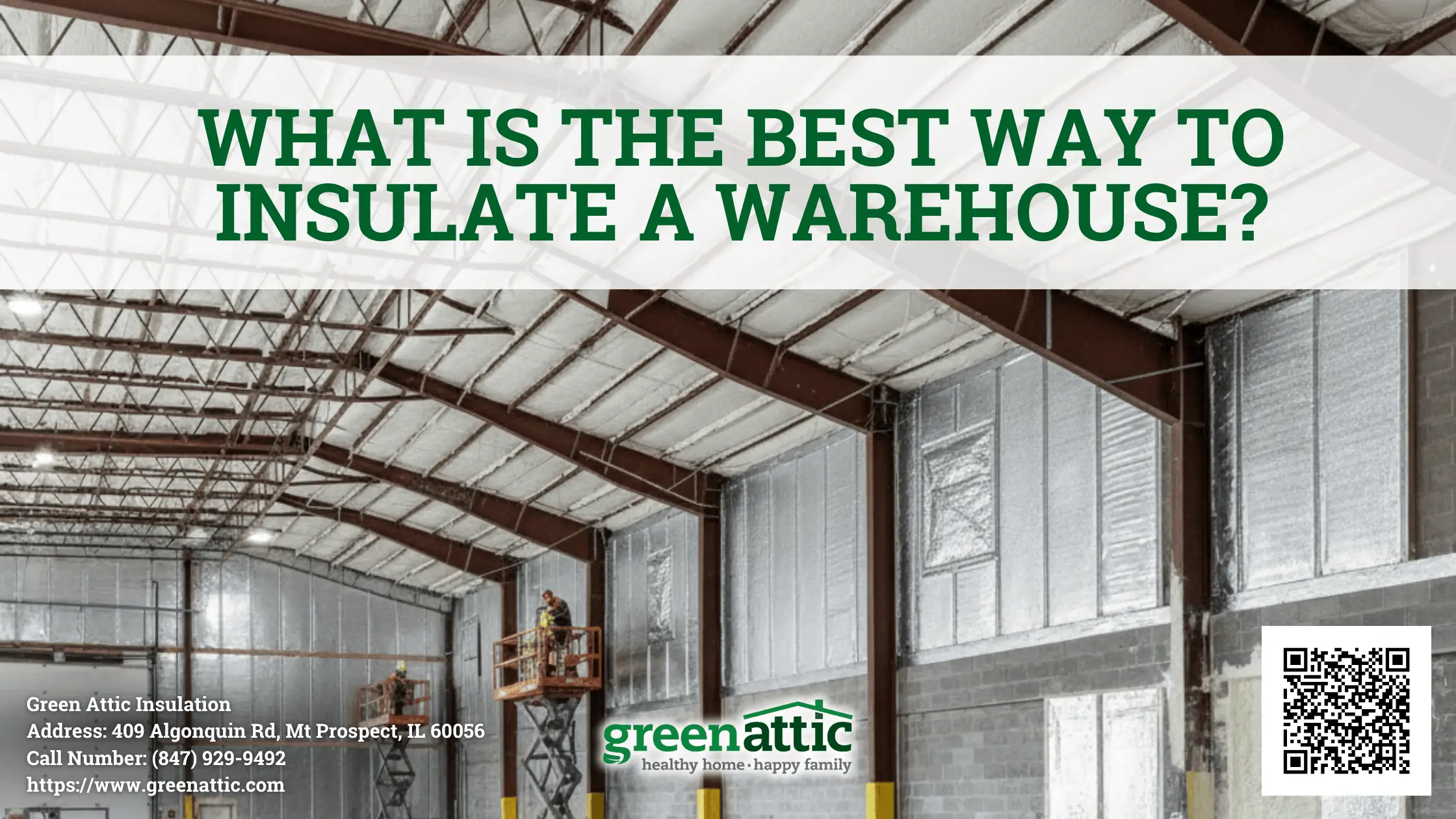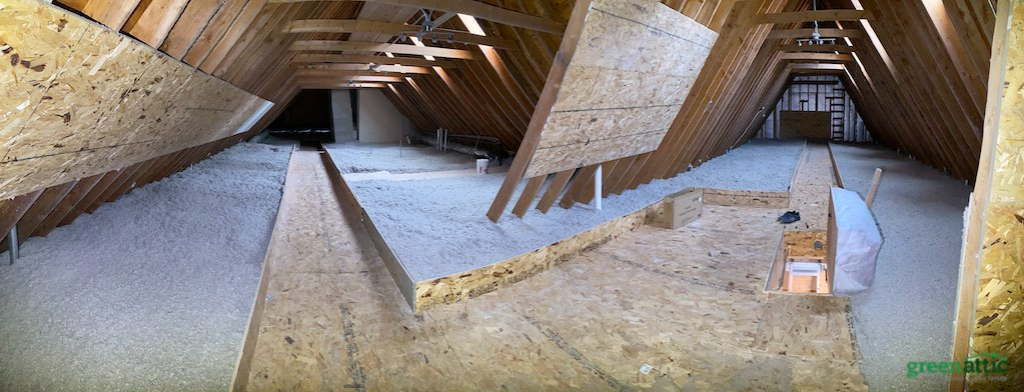Proper warehouse thermal insulation isn’t just about keeping the building warm in winter or cool in summer, it's about energy performance, reducing energy expenses, protecting stored goods, and creating a safer, more productive environment inside your warehouse.
This article will walk you through why insulation is more than just a building requirement ,it’s a key to efficiency, protection, and long-term savings. You’ll discover the different types of warehouse insulation, learn best practices for installation, and gain the insight you need to choose the right material for your operation’s success. By the end, you’ll know everything you need to know about warehouse insulation system and be ready to make your warehouse better.
Why Do You Need Insulation in a Warehouse?

A warehouse isn’t just a facility , it’s the heartbeat of modern business, driving storage, distribution, and growth every day. The truth is, quality insulation can lower energy bills, safeguard products, and boost efficiency , making it one of the smartest investments a business can make.
With the right insulation, your warehouse stays cool in the summer and warm in the winter , reducing energy expenses and easing the load on your heating and cooling systems. Proper warehouse thermal insulation helps maintain a comfortable environment, protect stored goods, and even reduce energy costs.
Good insulation also prevents moisture problems and mold growth. This means that whether you’re storing sensitive products or simply trying to maintain a safe workspace, insulation is one of the most cost-effective improvements you can make.
What Types of Insulation For Your Warehouse Should You Consider?
The best insulation system is the one tailored to your warehouse’s unique design and needs offering flexible solutions that ensure optimal comfort, efficiency, and protection. Your insulation choice can be perfectly matched to your needs from internal coverage that enhances comfort to specialized solutions that deliver outstanding performance in metal warehouses.
Warehouses have a variety of effective insulation options, and some of the most popular choices include:
- Fiberglass insulation: Affordable and easy to install, often used in industrial buildings.
- Spray foam insulation: Creates a strong insulation barrier that seals gaps.
- Cellulose insulation: An environmentally friendly choice.
- Vinyl insulation: Commonly paired with metal building systems, it adds an extra layer of durability and energy performance.
- Reflective foil: Helps block radiant heat.
Each insulation material comes with its own R-value showing how well it prevents heat transfer while supporting comfortable, energy-efficient conditions throughout your warehouse. The proper insulation is the one that matches your vision whether that means maximizing energy efficiency, staying cost-effective, or securing durability that lasts for years.
How Does Spray Foam Compare to Fiberglass in Warehouse Construction?
If you’re planning to insulate your warehouse, you’ve probably discovered the popular options of spray foam and fiberglass, two reliable solutions with distinct advantages. Both options come with valuable benefits, each designed to meet different needs when it comes to warehouse insulation.
Spray foam insulation expands into cracks and gaps, providing superior insulation and air sealing. It’s a great way of reducing heat gain and controlling air inside the building. Spray foam typically requires a higher upfront investment than fiberglass, but it often delivers added efficiency and performance over time.
On the other hand, fiberglass (often installed as batt insulation) is easy to install, affordable, and widely available. Although fiberglass doesn’t seal gaps the way spray foam does, it remains a trusted and cost-effective choice for insulating the partitions and soffits of large warehouses.
Is Fiberglass Insulation Still a Good Option for Industrial Buildings?
Yes, fiberglass insulation remains one of the most widely used insulation options for industrial buildings and warehouses. The reason? It’s affordable, adaptable, and can be installed quickly in large spaces like a metal warehouse.
Fiberglass insulation is available in convenient options like rolls, batts, or loose-fill, making it flexible to suit different warehouse needs. The R-value depends on thickness, but it generally provides a reliable insulation system that helps lower energy bills and maintain stable air inside the building.
Fiberglass delivers dependable benefits, and in some situations, exploring other insulation options can provide an even better match for your warehouse’s specific needs. For instance, warehouses that store perishable goods in cold storage can benefit from foam insulation with a higher R-value, ensuring stronger energy efficiency and compliance with stricter standards.
How Does Thermal Insulation Improve Energy Efficiency in a Warehouse?
An insulation system is designed to minimize heat transfer, helping a building maintain comfortable indoor conditions while staying protected from external temperatures. In a warehouse, where heating and cooling large open spaces can be costly, insulation makes a huge difference.
By adding the right insulation layer, you can reduce energy costs, cut down on energy bills, and even extend the life of your cooling system or heating equipment. Simply put, insulation can help reduce wasteful energy consumption.
Another benefit is that insulation provides comfort for employees working inside your warehouse, which boosts productivity. When insulation gives better climate control, workers aren’t distracted by temperature changes, and stored products remain safe from heat gain or extreme cold.
What Do You Need to Know About Insulating Warehouse Walls and Ceilings?
When insulating a warehouse, walls and ceilings are key, focusing on these areas ensures lasting comfort, better protection, and greater energy efficiency. A well-insulated warehouse roof and metal walls help prevent heat transfer, keeping energy costs lower while maintaining a more comfortable indoor environment.
Choosing the right insulation material for your walls and ceilings is essential to keeping your warehouse comfortable and energy-efficient all year long. You can choose from options like foam insulation, batt insulation, and reflective foil each offering unique benefits, whether you’re aiming for lightweight solutions, eco-friendly materials, or top-level insulation performance.
The right insulation varies between new and older warehouses, ensuring every facility gets a tailored solution that maximizes comfort, efficiency, and performance. In both cases, insulation can also help protect the structure from moisture damage while making the warehouse better overall.
How to Choose the Right Insulation Material for Your Warehouse?
Choosing the right insulation means balancing cost, R-value, and installation needs to ensure your warehouse achieves optimal comfort, efficiency, and long-term performance. The best warehouse insulation isn’t necessarily the most expensive, it's the one that fits your building’s design and supports lasting efficiency.
For example:
- Foam insulation works well in cold storage and high-performance settings.
- Fiberglass insulation is an affordable choice for large metal warehouse buildings.
- Reflective foil can help with radiant heat in sunny climates.
- Cellulose insulation is a good environmentally friendly option.
Ultimately, the best insulation is the one that matches your goals from meeting the demands of a high-energy facility to keeping your warehouse consistently cool, comfortable, and efficient through the summer.
What Are the Best Practices When It’s Time to Insulate Your Warehouse?
If it’s the time to insulate your warehouse, following best practices ensures you get the results you want. Start by reviewing the insulation in your facility in many older warehouses, updating or replacing the existing layer can quickly restore efficiency and improve performance.
Next, partner with experienced professionals who understand the best ways to install insulation in industrial buildings, ensuring quality and long-lasting results. This ensures your warehouse insulation meets building codes and truly delivers energy efficiency.
Finally, remember that insulation gives long-term savings. While installation costs can seem high at first, the ability of insulation can also lower energy bills and protect your facility makes it one of the smartest investments for any business.
Final Thoughts: Key Things to Remember About Warehouse Insulation
Discover the essential insights that will help you make smart decisions about warehouse insulation:
- Insulation is one of the best ways to improve energy efficiency in a warehouse.
- Metal building Insulation comes in many effective forms, including fiberglass, spray foam, cellulose, reflective foil, batt insulation, and vinyl each offering unique benefits to fit different needs.
- The best insulation is the one that fits your budget, matches your climate, and complements your building’s design for lasting efficiency.
- Insulation provides more than temperature control it helps with moisture, durability, and safety.
- Warehouse insulation helps reduce energy costs and extend the life of your heating and cooling system.
- The right insulation material makes the entire warehouse more productive and cost-effective.
If you’re planning to insulate a warehouse or upgrade your current system, now is the best time to start. Choosing the suitable insulation and applying best practices will make your warehouse better, safer, and more efficient for years to come.
About Green Attic Insulation
Green Attic Insulation, a family-owned and BPI-certified company, has served the Chicagoland area since 2009 with smart, sustainable insulation solutions that enhance energy efficiency in residential and commercial buildings.
With over 1,200 local projects completed, we help homeowners, builders, and developers meet and exceed IECC and local code requirements using residential, industrial or commercial spray foam insulaiton, cellulose and continuous insulation systems.
Our experienced team combines hands-on knowledge with building science expertise to recommend tailored solutions that reduce energy costs and improve indoor comfort. Whether you're retrofitting a drafty attic in Evanston or insulating a new build in Naperville, our goal is to make your building healthier and more efficient for the long term.















.svg)
.svg)
.svg)
.svg)
.svg)
.svg)
.svg)
.svg)
.svg)
.svg)
.svg)
.svg)
.svg)
.svg)

.svg)
.svg)
.svg)
.svg)
-1.svg)
.svg)
.svg)





